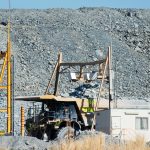Air pollution
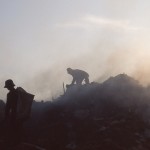
The smoke and stench blow into the air in Phnom Penh’s huge landfill. Photo by Alan Morgan, taken on 17 September 2011. Licensed under CC BY-NC-ND 2.0Air pollution originates mainly from the burning of fuels such as petroleum, diesel and coal in the transport, household, ...
Construction
Construction on a Phnom Penh tower block. Photo by Axel Drainville, taken on 4 May 2011. Licensed under CC BY-NC 2.0The construction industry has boomed in Cambodia. From 2000 to November 2018, Cambodia’s Ministry of Land Management, Urban Planning and Construction approved 43,136 construction projects representing ...
National parks and wildlife sanctuaries
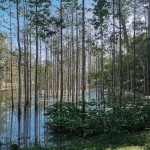
Cambodia’s national parks (or ‘natural parks’) and wildlife preserves were established under the 1993 Royal Decree on the Protection of Natural Areas. Although other areas have been added subsequently, there is currently no officially available list of all protected areas and their boundaries. ...
Development and assistance for land tenure and land titling
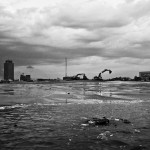
Beginning in 2002, the World Bank, Germany, Finland and Canada began a joint-program to promote land tenure security in Cambodia by providing financial and technical support to land titling efforts. Following the eviction of residents of the Boeung Kak Lake area of Phnom Penh due ...
Mitigation
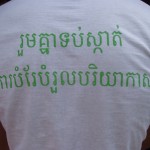
Together, fighting climate change. Photo by 350.org, taken on 12 October 2010. Licensed under CC BY-NC-SA 2.0.Clean Development MechanismThe Clean Development Mechanism (CDM), defined in Article 12 of the Kyoto Protocol, allows a country with an emission-reduction or emission-limitation commitment under the Kyoto Protocol to ...
Energy policy and administration
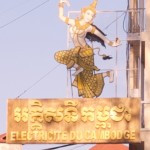
Electricite du Cambodge (EdC). Photo by bmeabroad, taken on 10 November 2011. Licensed under CC BY-NC-SA 2.0.Low electrification rates and over-dependence on fossil fuel imports have contributed to Cambodia ranking 120 out of 124 nations in the new World Economic Forum’s Global Energy Architecture Performance Index ...
Ministry of Education, Youth and Sports
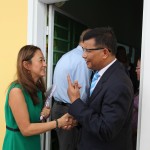
H.E. Hang Chuon Naron and Julie Chung in the inauguration of the Rice Academy, Cambodia. Photo by U.S Embassy Phnom Penh, take on 17 September 2014. Licensed under CC BY-NC-ND 2.0In 1996, the Ministry of Education, Youth and Sport (MoEYS) was established.114 Its organization and functioning ...
Mining
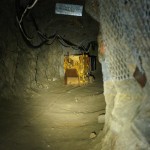
The mining sector in Cambodia is mostly undeveloped, and active mining enterprises are typically small-scale quarries producing materials for construction, such as laterite, marble, granite, limestone, gravel and sand. There is no industrial-scale extraction of minerals, although many exploration licenses have been granted to ...
Ministry of Commerce

In 1996, the Ministry of Commerce (MoC) was established by law. Its organization and functioning is defined by a sub-decree of the Royal Government of Cambodia. After a nomination of the Prime Minister’s candidate and the vote of confidence on the cabinet by the National ...
Fisheries production
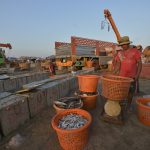
Local workers loading fresh catch to be transported to the city market at Chhnoc Trou pier, Kampong Chhnang province, Cambodia. Photo by Sylyvann Borei/World Fish, taken on 7 April 2014. Licensed under CC BY-NC-ND 2.0.Cambodia has abundant and productive fisheries. Fish is a traditional staple in the Cambodian ...
Forest classifications
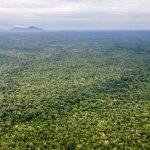
The classification of forests is set out in the Law on Forestry 2002. The law applies to both natural forests and plantations, and “defines the framework for management, harvesting, use, development and conservation of the forests in the Kingdom of Cambodia. The objective of this ...
Land sales and trades
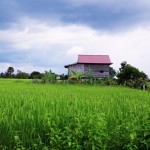
The legal framework surrounding land sales and transfers was obliterated by the 2007 Civil Code, leaving little legal guidance. Forced land sales and distress sales are a substantial cause of land tenure insecurity in Cambodia. They are a significant cause of landlessness, and it is ...
Copper
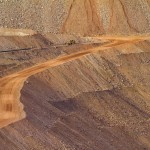
Copper exploration is concentrated in Preah Vihear province in the northern part of Cambodia. The most active explorer is Australian-based Geopacific Resources, in collaboration with Cambodian tycoon Kith Meng’s Royal Group. Geopacific Resources is working with Cambodian-based Royal Group at Kou Sa, a 158 km2 ...
Iron and steel
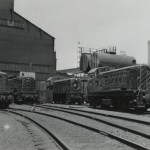
Although Cambodia is believed to have iron ore resources and a number of exploration licenses have been granted, no significant finds have been reported. There is no commercial mining of iron ore in the country. While ambitious plans for mining and steel plants have been ...
Deforestration drivers
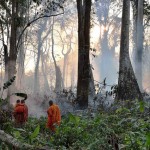
Deforestation has been one of the most significant changes the Cambodian landscape has undergone in recent decades. Key drivers of this process have been land concessions and subsequent land conversion, and large-scale illegal logging. ...
Hydropower dams
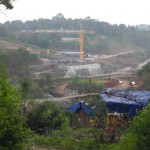
In 2003, a national sector review for hydropower was prepared by the Ministry for Industry, Mines and Energy (now Ministry of Mines and Energy) and the Cambodian National Mekong Committee (CNMC). This report identified 60 possible sites for hydropower development in Cambodia and estimated the ...
Bilateral development assistance
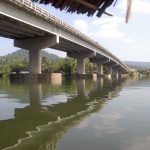
Phum Doung Bridge over the Tatai River. Photo by Robert Tyabji, taken on 9 December 2010. Licensed under CC BY-NC-ND 2.0Bilateral aid is assistance given by a government directly to the government of another country or to a local NGO. The Royal Government of Cambodia ...
Red Cross
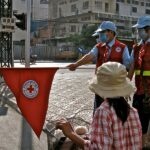
The Cambodia Red Cross (CRC) is the principal humanitarian society in Cambodia. The government has designated it as an auxiliary to public bodies offering humanitarian assistance. In addition to the national headquarters, the CRC has 25 branches.215 CRC was founded in 1955 and has worked ...
Artisanal mining

Artisanal mining is small-scale mining that typically involves individuals, family groups or small communities, often working with limited technology. The mining may be seasonal, fitted around other work such as farming. There is a large overlap between this type of activity and gemstone mining. Artisanal ...


